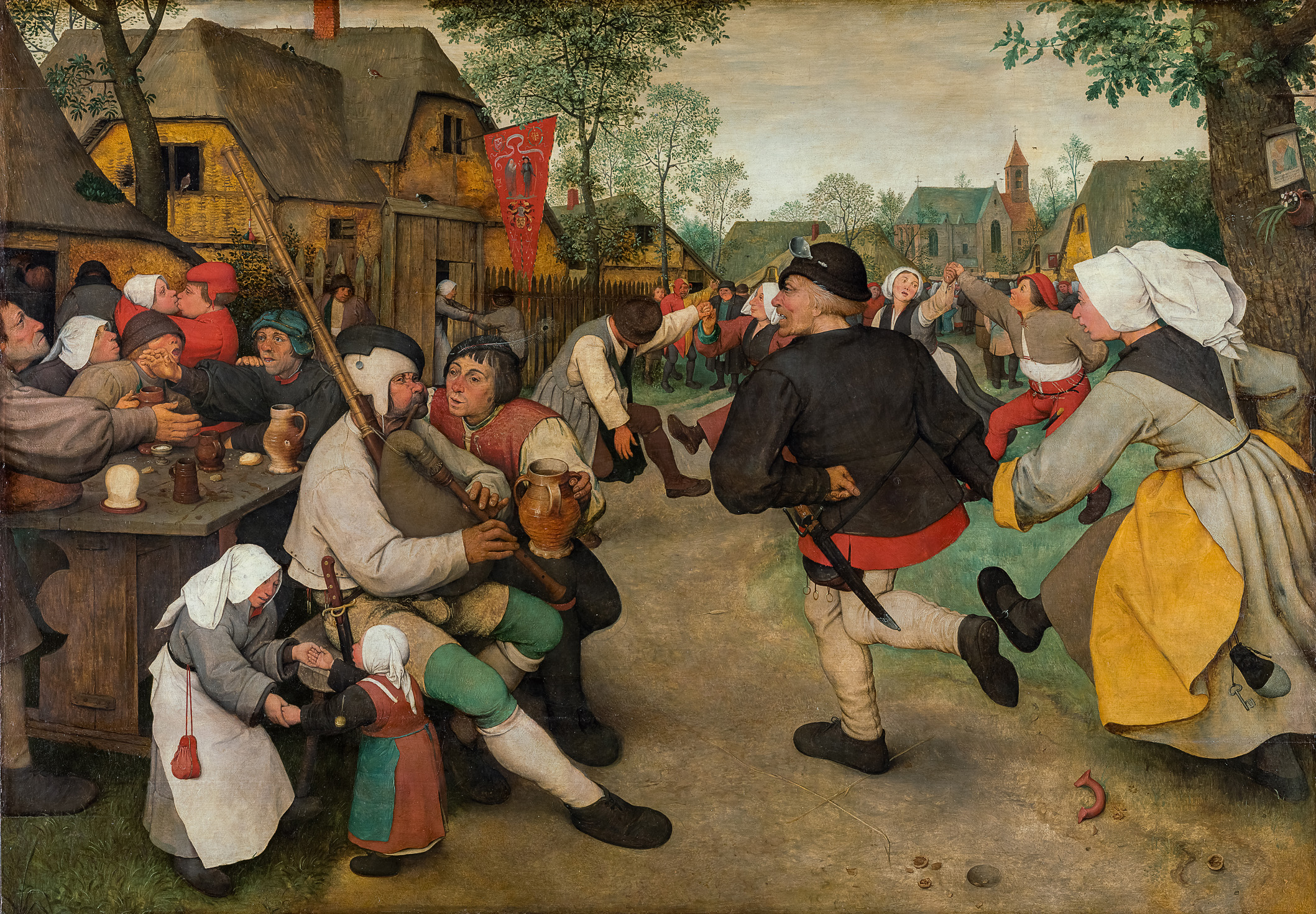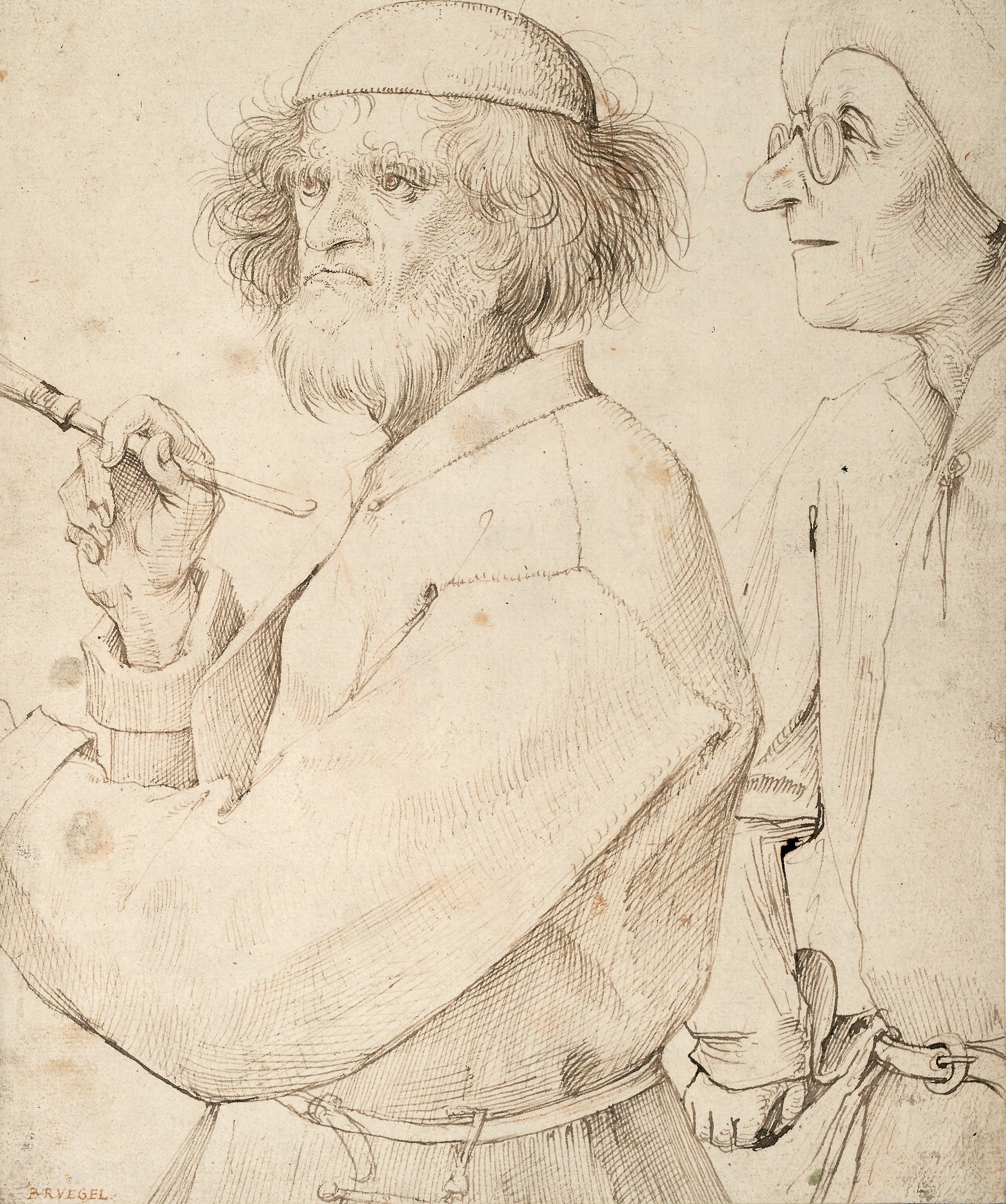We present today's painting thanks to Kunsthistorisches Museum in Vienna where now you can visit the world's first ever major monograph of Pieter Brueghel the Elder. About half of all the extant works by Pieter Bruegel the Elder are on show there. It's a must see for all art lovers—but if you can't be in Vienna, today you can see him in DailyArt! :)
Bruegel’s Peasant Dance is one of the paintings on which the myth of Peasant Bruegel is based—fostered by Karel van Mander’s observation in his Schilder-Boeck (1604) that “Bruegel entertained himself observing the nature of the peasants – in eating, drinking, dancing, leaping, lovemaking and other amusements.” Thus far the painting’s patron and original context cannot be conclusively determined.
The church fair following the completed harvest—to which the stalks of straw and nutshells in the foreground refer—provides the peasants a well-earned occasion to celebrate. The setting is a street in a Brabantine town that stretches between an inn and a church. An improvised (folding?) table with simple fare (a loaf of bread, butter, salt, and beer) and drinking vessels is set up beside the tavern in the left foreground. Two wreaths on the roof indicate that fresh drinks are being served here. The red flags of a bowmen’s guild, depicting the Virgin and Saint George, signal the occasion for the festival. The colored woodcut on the tree at the right, with the bunch of flowers below, are further references to the Christian origins of this peasant celebration. The market stalls around the church, which close the composition in the background, are also traditional kermis (fair) motifs.
The couple charging in quick step to the dance from the right and the begging figure with an extended hand at the left edge seeking their attention, create a tense moment of irritation that impressively characterizes the composition and draws the viewer into its spell. This lively snapshot, paired with the wonderfully rendered, portrait-like character heads such as that of the bagpiper and his crony in the foreground, the pulsing rhythm of the lively circle dance, and the charming scene of the two children tentatively dancing, distinguish this masterpiece, which is unequalled in dynamism and monumentality. A refined, spatially-defining use of color leads the viewer through the composition. The red hose of the young dancer in the middle ground, whose feet flash out from below the arms of the couple in the foreground and thus anchor his position in space, is an example of this.
P.S. For more Brueghel click here to read about his The Harvesters.


 Pieter Bruegel the Elder
Pieter Bruegel the Elder